
Porto Alegre is the capital and largest city of the Brazilian state of Rio Grande do Sul. Its population of 1.3 million inhabitants (2022) makes it the 11th-most populous city in the country and the centre of Brazil's fifth-largest metropolitan area, with 4.4 million inhabitants (2010). The city is the southernmost capital city of a Brazilian state.

Guaíba is a city located in the Metropolitan Porto Alegre of Porto Alegre, in the Brazilian state of Rio Grande do Sul. The city is on the shores of the Guaíba Lake.
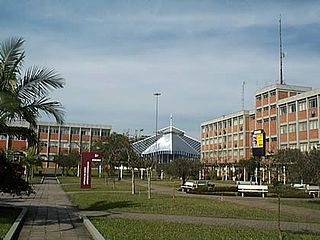
The Lutheran University of Brazil is a university which covers several states throughout Brazil.
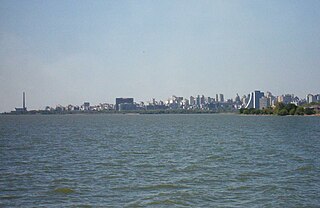
Guaíba is a major water body in Rio Grande do Sul, the southernmost state of Brazil. It is commonly referred to either as a "river" or as a "lake". The Jacuí River, the Sinos River, the Gravataí River and the Caí River empty into Guaíba from the north, which in its turn empties into the Lagoa dos Patos, the largest lagoon in South America further down south. The body of water covers 496 square kilometres (192 sq mi) in total.

Centro Histórico is a neighborhood of the city of Porto Alegre, the state capital of Rio Grande do Sul in Brazil.

Moinhos de Vento is a neighbourhood of the city of Porto Alegre, the state capital of Rio Grande do Sul in Brazil. It was created by the law number 2022 of December 7, 1959.

Praia de Belas is a neighborhood of the city of Porto Alegre, the state capital of Rio Grande do Sul, Brazil. It was created by Law 2022 from December 7, 1959.

Três Figueiras is a neighbourhood of the city of Porto Alegre, the state capital of Rio Grande do Sul, Brazil. A residential neighbourhood, it embrace people from upper middle class to upper class, having many sophisticated houses. Três Figueiras was created by Law 2022 of December 7, 1959. There is located the Design School of Unisinos. Also, there has two highly regarded and traditional private schools, the Farroupilha and Anchieta schools, and a highly regarded private school for childhood, the Baby House.

Tristeza is a neighbourhood in the city of Porto Alegre, the state capital of Rio Grande do Sul, Brazil. It was created by Law 2022 from December 7, 1959.

Belém Novo is a neighbourhood in the city of Porto Alegre, the state capital of Rio Grande do Sul, Brazil. It was created by Law 6893 from September 12, 1991. Located on the bank of Guaíba Lake, Belém Novo is considered part of the rural zone of the city.
Petrópolis is a neighbourhood in the city of Porto Alegre, the state capital of Rio Grande do Sul, in Brazil. It was created by Law 2022 from December 7, 1959.
Rio Branco is a neighbourhood (bairro) of the city of Porto Alegre, the state capital of Rio Grande do Sul, in Brazil. It was created by Law 2022 from December 7, 1959.
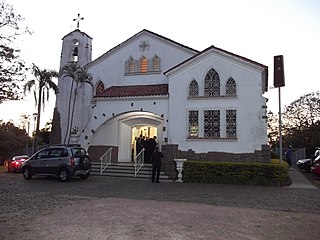
Vila Assunção is a neighbourhood (bairro) in the city of Porto Alegre, the state capital of Rio Grande do Sul, in Brazil. It was created by Law 2022 from December 7, 1959, being located on the bank of Guaíba Lake.
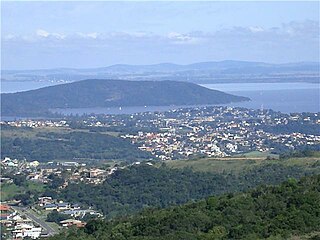
Ponta Grossa is a neighbourhood (bairro) in the city of Porto Alegre, the state capital of Rio Grande do Sul, in Brazil. It was created by Law 6893 12 September 1991, but had its limits modified by Law 9993 16 June 2006.
Jardim Isabel is a neighbourhood (bairro) in the city of Porto Alegre, the state capital of Rio Grande do Sul, in Brazil. It was created by Law 10724 from July 9, 2009, being the newest official neighbourhood in town.
Vila Conceição is a tiny neighbourhood (bairro) in the city of Porto Alegre, the state capital of Rio Grande do Sul, in Brazil. It was created by Law 2022 from December 7, 1959.

Serraria is a neighbourhood (bairro) in the city of Porto Alegre, the state capital of Rio Grande do Sul, in Brazil. It was created by Law 6893 from September 12, 1991.

Pedra Redonda is a neighbourhood (bairro) in the city of Porto Alegre, the state capital of Rio Grande do Sul, in Brazil. It was created by Law 2022 from December 7, 1959.

Marcílio Dias is a neighbourhood (bairro) in the city of Porto Alegre, the state capital of Rio Grande do Sul, in Brazil. It was created by Law 2022 from December 7, 1959, but had its limits modified by Law 6218 from October 17, 1988, which originated the Farrapos and Humaitá neighbourhoods.
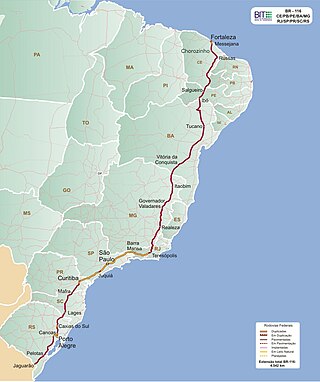
BR-116 is part of the Brazilian Highway System. With at total length of 4,542 km (2,822 mi) it is the longest highway in the country. It is also the longest highway in the country to be completely paved.

















